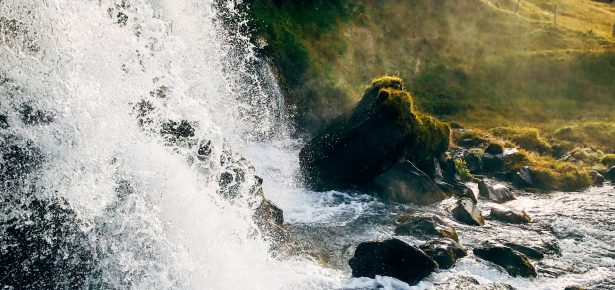
‘I do not intend to conflate ecological with epidemiological calamities, though of course they can be intimately linked’, wrote Anahid Nersessian in 2013. Can we, though, compare Covid-19 to the Anthropocene, the proposal that we have entered a new geological epoch marked by humanity’s indelible alteration of the Earth: its rock strata, ecosystems, atmosphere?
The configurations are near identical. Both appear to defy human understanding. Like climate change, Covid-19 fills global space but can only be seen in the abstract: maps, graphs, bar charts, spiky visualisations of the virus itself. Covid too sharpens the tension the historian Dipesh Chakrabarty finds in the Anthropocene between two conceptions of the human: the Latin homo and the Greek Anthropos. Homo acts purposefully, rationally, socially. Anthropos, the human species, acts with blind, self-interested, cumulative force. The inability of homo to rein in Anthropos is why global warming, pollution or mass extinction (animal or human) may be difficulty to stop. For our inability to stop flying, driving, or buying consumer goods see sunbathing in public parks, or stockpiling.
And both are intimate. One reading of the Anthropocene is that it’s not humans per se who have created this ‘fragile Earth’ but humans under Capitalism. The Swedish scholar Andreas Malm dates the beginning of the ‘Capitalocene’ to the steam engine and people congregating in factories and cities. In the nineteenth-century, tuberculosis, like Covid-19, was incubated by overcrowding, poor housing, lack of hygiene. In London, the UK’s epicentre, I remain (so far) untouched, but panic when I imagine the virus much in the way the Victorian priest-poet Gerard Manley Hopkins described standing and watching as the convergence of infections that characterises TB waged war in the body of his parishioner, ‘Felix Randal’. Through Hopkins, I see Covid-19 in terms of the deadly intimacies of those ‘Fatal four disorders, fleshed there, all contended’.
In London Orbital, the psychogeographer Iain Sinclair described a different kind of stockpiling, the Thatcher government’s hoarding of fuel ahead of the 1984-5 miner’s strike, spotted by an archivist at the nearby Joyce Green Hospital in Dartford. (Coincidentally the hospital opened in 1903 as an isolation hospital for treating smallpox, replacing ‘plague ships’ on the Thames Riverside). Hearing about the fuel, Sinclair writes ‘Know your own small patch and the rest of the world becomes readable’.
This uncustomary equation of local and global perspective is needed now to comprehend both the Anthropocene and Covid-19. Media narratives dwell on the specific – heart-rending deaths, the heroism of NHS staff, actions taken (or not) by government politicians – but not the bigger picture. That bigger picture is the Capitalocene. In The Mushroom at the End of the World the American anthropologist Anna Lowenhaupt Tsing traces the complex commodity chain of the valuable matsutake mushroom into Capitalism’s dark corners: amoral traders, jungle fighters, industrial forests. It will require the vigilance of Tsing to contact trace Covid into equivalent recesses: the factory farms and wet markets where tightly packed animals most likely incubated the virus; the global merchant banks investing in Chinese poultry farms; the international business travel and sumptuous cruises that carried it around the world. Like climate change, soil erosion, or the ecological ruination of drought or flood, the tracing of the virus itself might compel us to stop imagining that the precariousness of food, farming and nature in international supply chains doesn’t matter.
An absence of international cooperation and the scramble of ‘vaccine nationalism’ suggests that homo’s subduing of Anthropos will remain as vain a hope as the succession of United Nations Climate Change conferences suggests. And yet? In April New Scientist reported reduced carbon emissions and 11,000 fewer deaths in Europe from air pollution. This is the final, perhaps most unlikely, configuration. Bequeathing blue vapourless skies, empty roads, and audible birdsong Covid-19 has allowed us to glimpse a better life beyond the Anthropocene: if only we dare trace that line.
Latest Comments
Have your say!